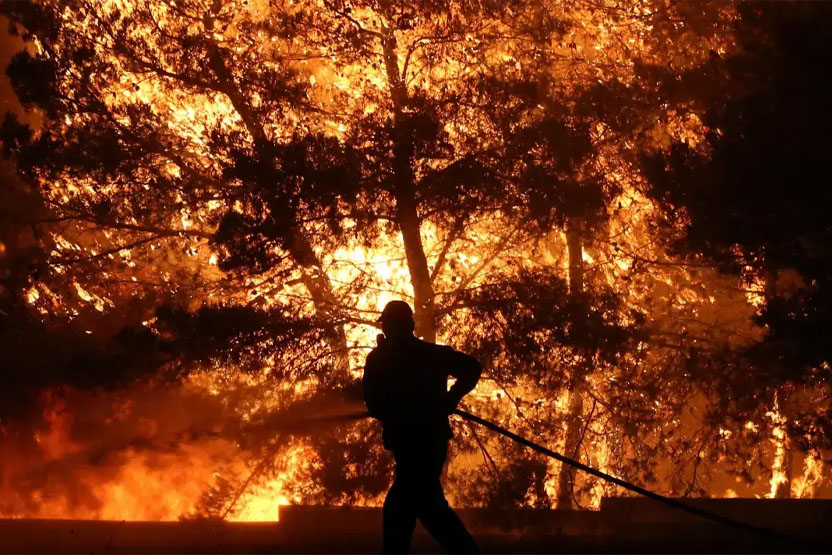
Widespread fire in Granichak and Dabravka forests in Bulgaria, on July 13th
In recent days, a dramatic surge in wildfires all over the world — fueled largely by climate change and unprecedented global warming — has sparked growing concern over nature’s capacity to recover, especially in fragile forest ecosystems. Are these landscapes doomed to permanent damage, or can they rebound over time? To address this critical question, it is useful to explore insights offered by Christine Conte in her
article “How Ecosystems Recover After a Fire” which sheds light on how nature regenerates after such catastrophic events.
Natural Recovery Processes: The Role of Ecological Succession
Historically, fire has been an integral part of many ecosystems, particularly forests, prairies, and grasslands. These environments have adapted over millennia to periodic fires, which can actually promote biodiversity and resilience. As Conte explains, the aftermath of a fire opens a temporary “scar” on the land — but for many species, this is a rare opportunity. The absence of competitors and predators allows hardy pioneer species to colonize the area, marking the beginning of a natural process called ecological succession.
One of the most emblematic examples is the 1988 Yellowstone fires, where over 30% of the park burned. Decades later, the regrowth of plant and animal life in Yellowstone stands as a powerful reminder that ecosystems can recover, even after large-scale devastation. Early colonizers such as microorganisms, wind-borne seeds, and resilient plants enrich the soil, paving the way for shrubs, trees, and eventually wildlife. However, this process can take decades, even centuries, depending on the severity of the fire.
Climate Change: A New Threat to Natural Recovery
The scale and intensity of modern wildfires — amplified by global warming and prolonged droughts — are challenging nature’s capacity to heal itself. The fires in Canada in 2023, the repeated wildfires across California, and Mediterranean blazes highlight a worrying trend: fires are becoming larger, hotter, and more destructive.
These intense events create vast burned areas that pioneer species struggle to recolonize. The farther these species must travel from surviving ecosystems, the lower the chances of natural recovery. Moreover, climate change exacerbates conditions on the ground — higher temperatures and drier soils make it harder for new plants to establish, especially sensitive tree seedlings.
Human Responsibility: Learning from Indigenous Practices and Modern Science
humanity now faces a responsibility to assist nature in its recovery. Historically, Indigenous peoples in North America and Australia practiced controlled burns to manage ecosystems, prevent massive wildfires, and encourage biodiversity. Sadly, colonization suppressed these traditional methods, leading either to reckless deforestation or to strict fire suppression, both of which worsened fire risks.
Since the 1970s, land management agencies have reintroduced prescribed burns — controlled fires designed to reduce excess vegetation and mimic natural cycles. These practices align with the intermediate disturbance hypothesis, which suggests that moderate disruption can actually increase ecosystem diversity.
Beyond prevention, humans can also play a proactive role after fires. Efforts such as community planting, reintroducing pioneer species, and stabilizing soils help accelerate ecological recovery and prevent further degradation like erosion. fostering biodiversity in post-fire landscapes strengthens resilience against future climate shocks.
The future of post-fire recovery in the age of climate change is not solely in nature’s hands. While ecosystems possess remarkable regenerative power, climate-driven changes in fire patterns require human stewardship — blending traditional ecological knowledge with modern conservation science.
We must abandon the illusion that nature will always recover on its own in a rapidly warming world. Instead, we must support affected ecosystems with responsible management and proactive restoration. In doing so, humanity not only safeguards biodiversity but also strengthens its own resilience in the face of a changing climate.


Comment
Reply